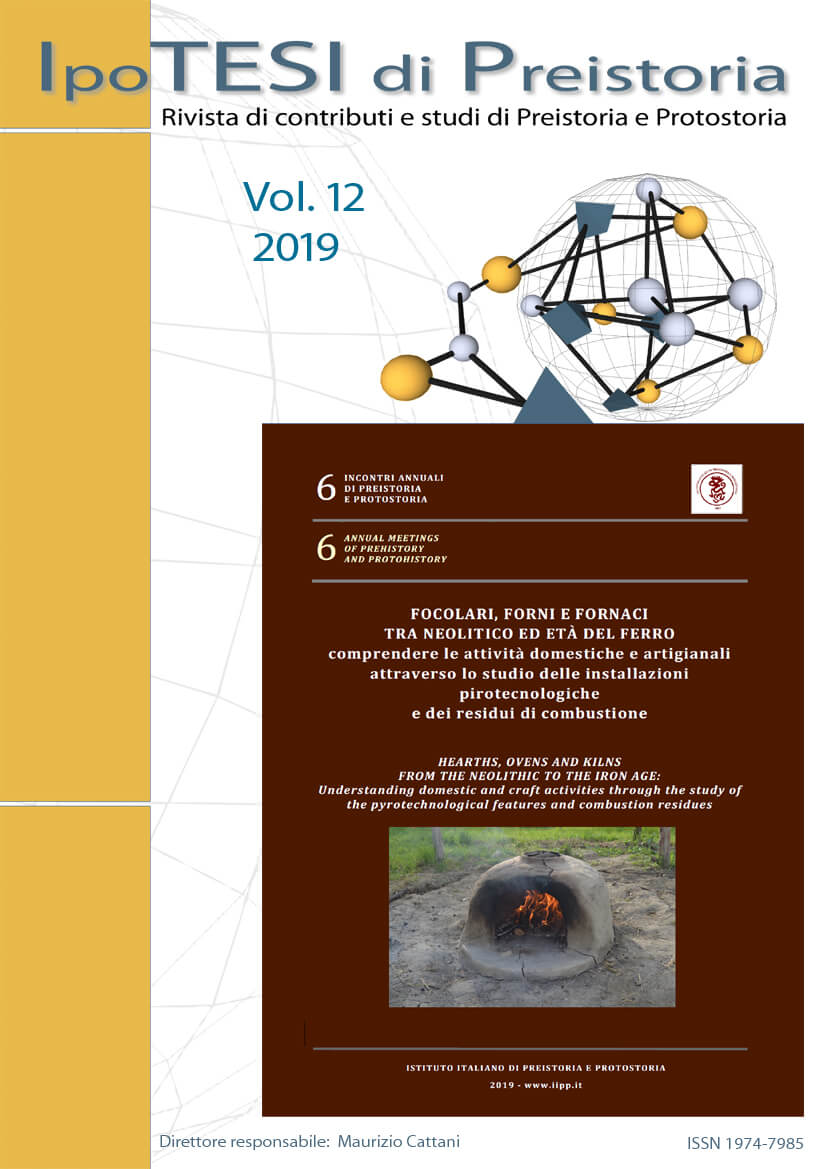Thermal study of a proto-historical oven: theory and practice
DOI:
https://doi.org/10.6092/issn.1974-7985/10319Keywords:
ceramic technology, archeometry, metal ages, ovens, kilns, Sevrier kilnAbstract
On the sunken island of Crêt de Chatillon (Annecy Lake), in a Final Bronze Age pile-dwelling site, were discovered fragments of a terracotta kiln. Aimé Bocquet, father of the French underwater archaeology restored it in 1974. This perforated floor structure, without equivalent at the time was logically interpreted as a potter's kiln. Half a century later, many similar discoveries did not put an end to the debate about the function of these devices. Will it be possible to promote or rule out certain functional hypotheses by means of archeometry and in particular through a thermal study?Downloads
Published
2019-12-31
How to Cite
Coulon, J., Fontaine, C., & Proust, D. (2019). Thermal study of a proto-historical oven: theory and practice. IpoTesi Di Preistoria, 12(1), 351–368. https://doi.org/10.6092/issn.1974-7985/10319
Issue
Section
Conference papers
License
Copyright (c) 2019 Jean Coulon, Claude Fontaine, Dominique Proust
Copyright for articles published in this journal is retained by the authors, with first publication rights granted to the journal. The authors agree when submitting their work that it can be copied by anyone for noncommercial purposes but only if proper credit is given. Thus by virtue of their appearance in this open access journal, the articles have been declared free to use, with proper attribution, in noncommercial settings. All authors are responsible for the content of their work, including proper citation, attribution and usage permissions.
This journal is licensed under a Creative Commons Attribution NonCommercial 4.0 International License.
See also our Open Access Policy.
See also our Open Access Policy.





